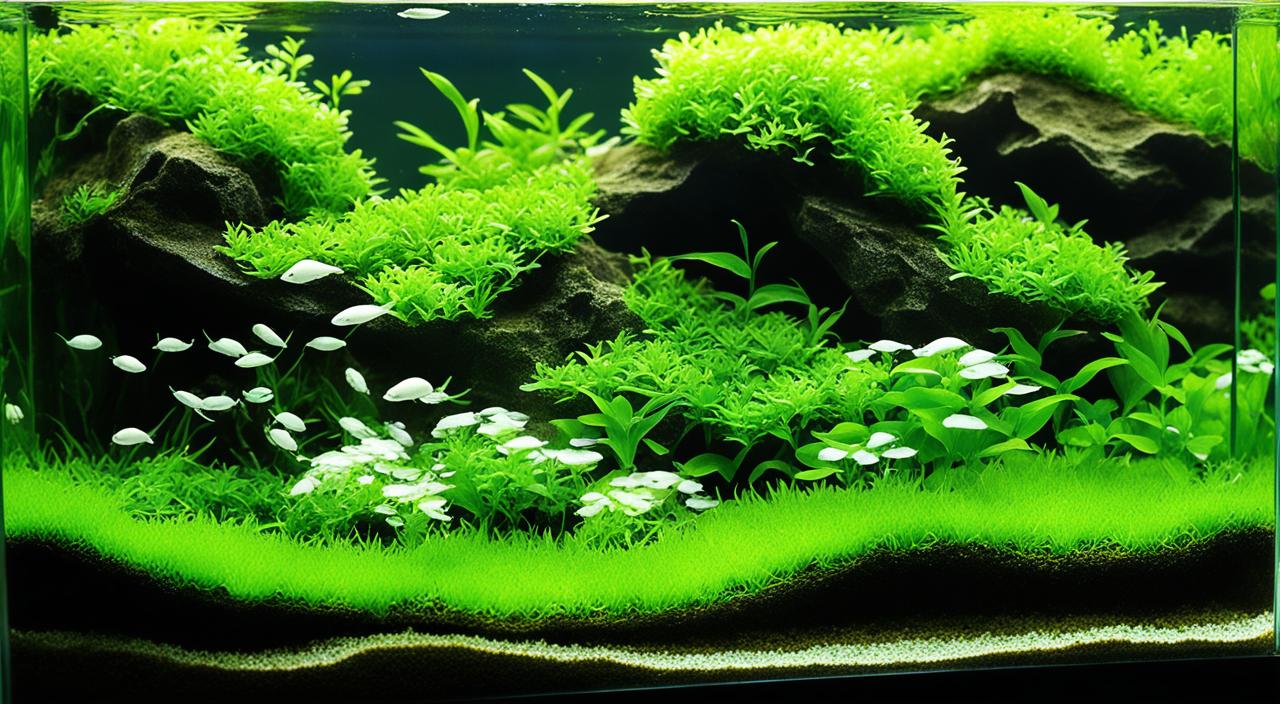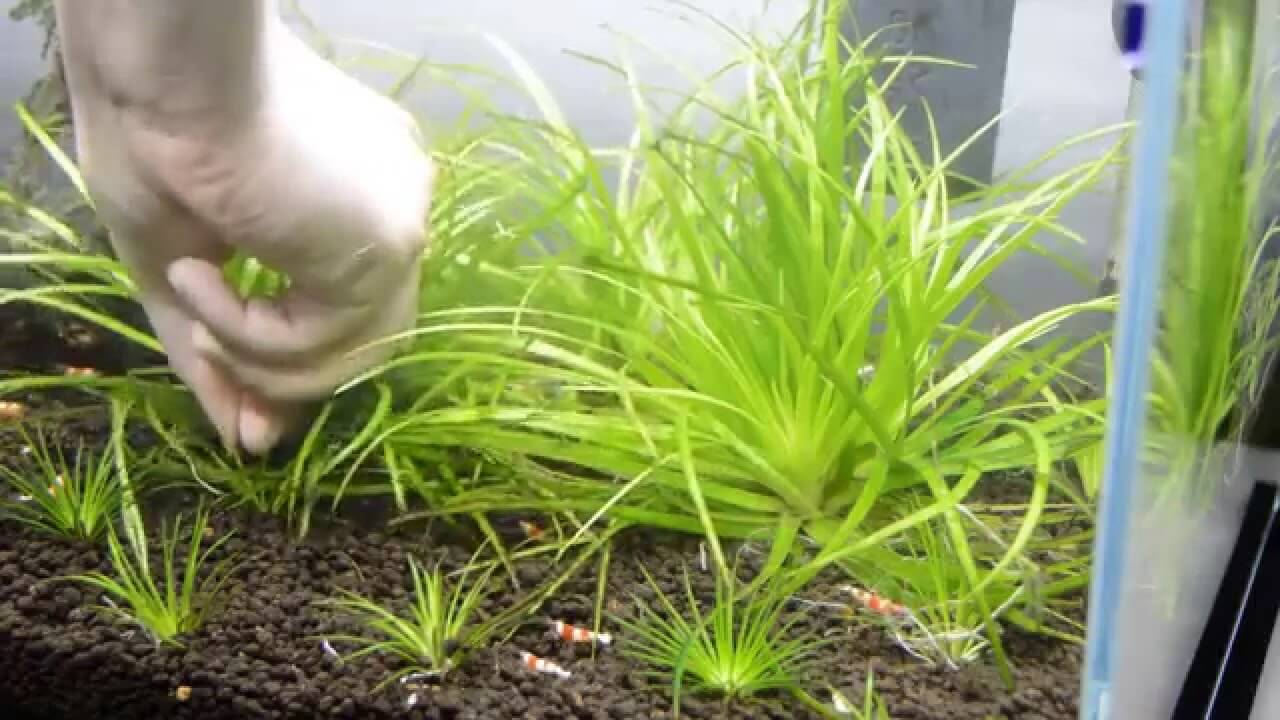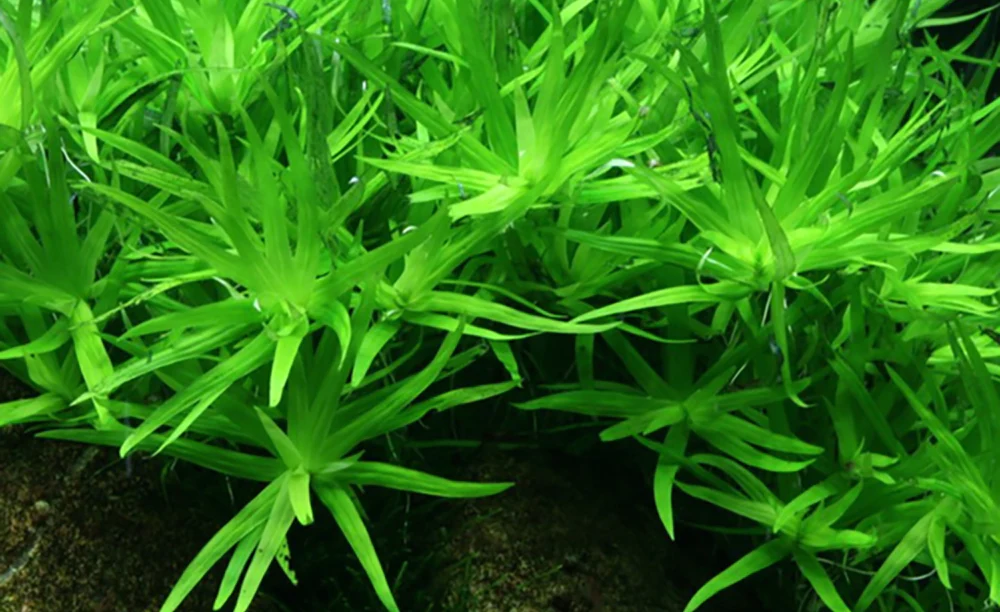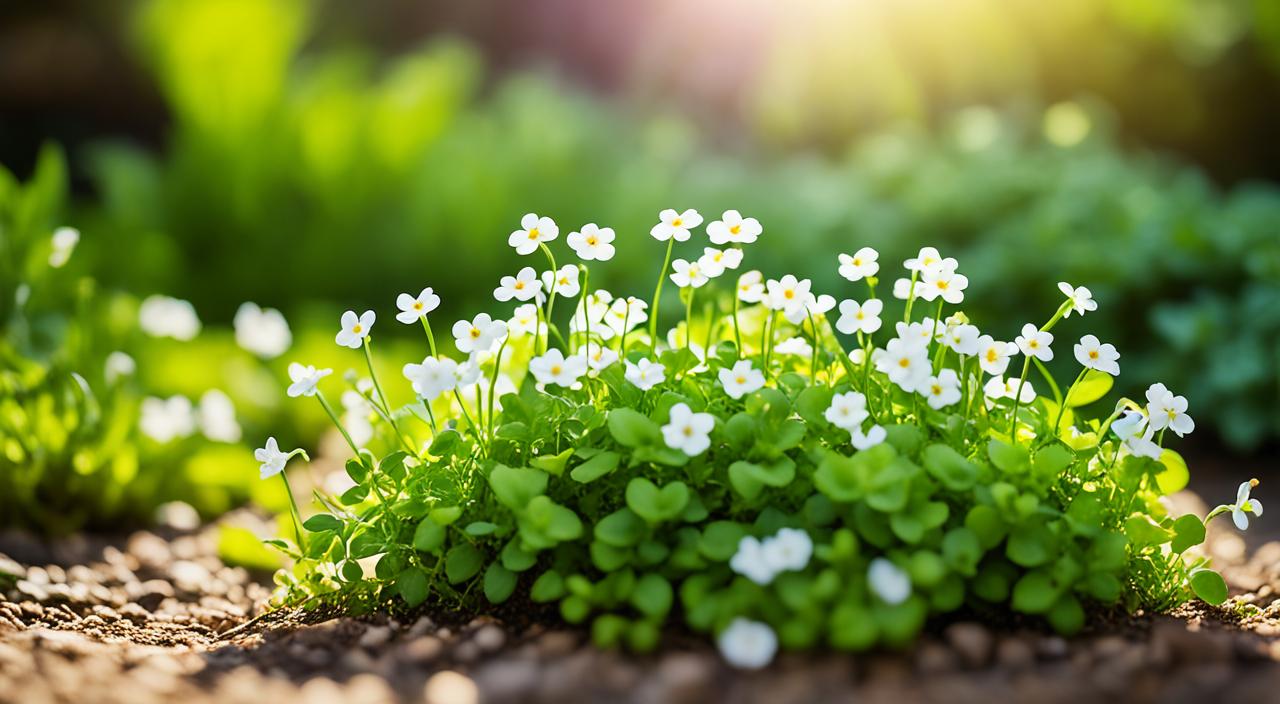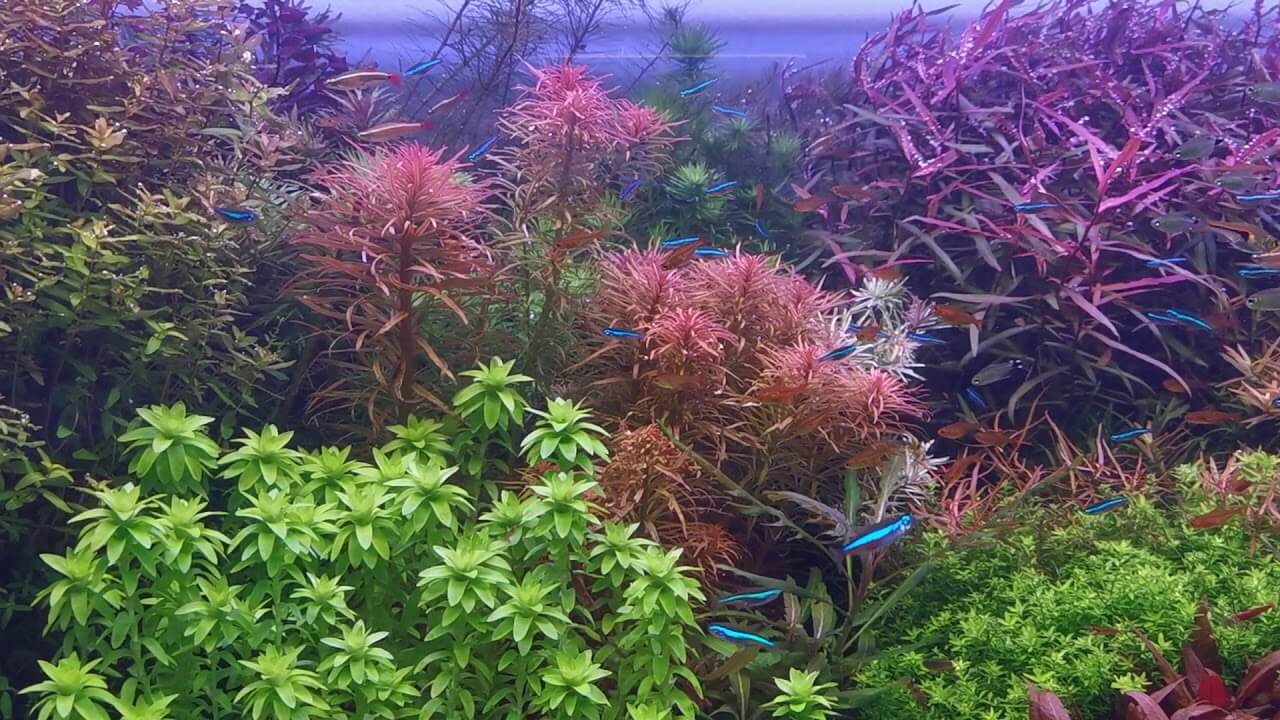Growing aquatic plants in a freshwater aquarium can add beauty and natural appeal to any tank. One plant that stands out for its unique appearance and ease of care is Hygrophila stricta. This plant adds vibrant colour to any aquascape with its striking red stems and elongated leaves.
Hygrophila stricta, also known as the Asian marshweed, is popular among beginner and experienced aquarists. Its adaptability allows it to thrive in various tank environments, making it suitable for multiple setups.
This fast-growing plant can reach a height of 6-12 inches, making it an excellent choice for the background or midground of an aquarium. Its relatively soft and elongated leaves provide an eye-catching display, especially when paired with the plant’s red stems.
In this article, I will guide you through everything you need about caring for Hygrophila stricta, including its origins, ideal placement, lighting requirements, compatible tank mates, feeding and fertilization, and more. So, let’s dive in and discover the beauty and versatility of this stunning freshwater aquarium plant.
Key Takeaways:
- Hygrophila stricta is a versatile freshwater aquarium plant known for its unique red stems and elongated leaves.
- It can thrive in various tank environments and is suitable for beginners and experienced aquarists.
- Hygrophila stricta prefers moderate lighting and adds a beautiful reddish tint to the aquarium.
- This plant can reach a height of 6-12 inches and is ideal for the background or midground of an aquascape.
- Following proper care and maintenance, you can enjoy the vibrant beauty of Hygrophila stricta in your freshwater aquarium.
Brief Overview Of Hygrophila stricta
Hygrophila stricta, belonging to the Acanthaceae family, is a fast-growing aquatic plant native to Southeast Asia. It can reach a height of 6-12 inches in the aquarium and is well-known for its vibrant appearance. This plant can be emersed and submerged, making it a versatile option for aquarists.
One of the critical factors for the successful growth of Hygrophila stricta is providing moderate to high lighting. This plant thrives in high-light aquatic environments, where it can display its full beauty. Due to its tolerance for a wide range of water conditions, including temperature and pH, Hygrophila stricta is considered beginner-friendly and suitable for various tank setups.
Hygrophila Stricta Information Table:
| Row Names | Descriptions |
|---|---|
| Scientific Name: | Hygrophila stricta |
| Common Names: | Temple Plant, Water Wisteria |
| Origin: | Southeast Asia |
| Height: | Up to 50 cm (20 inches) in optimal conditions |
| Growth Rate: | Fast |
| Colour: | Green, with brighter green under high light conditions |
| Aquarium Placement: | Background or mid-ground, depending on tank size |
| Water Type: | Freshwater |
| pH: | 5.5 – 8.0 |
| Care Level: | Easy |
| Light Requirements: | High. LUX: 5000-7000 Lux for optimal growth. PAR: 40-60 µmol/m²/s. Kelvin: 6500-7000K for vibrant growth. |
| CO2 Requirements: | Green, with brighter green under high-light conditions |
| Temperature: | Moderate. It prefers some water movement but does not require strong flow. |
| Flow Rate: | It is beneficial but not required for growth. 10-20 mg/L can significantly enhance growth and coloration. |
| Propagation: | Green, with brighter green under high-light conditions |
| Feed Type: | Benefits from regular fertilization with a comprehensive nutrient solution, especially if CO2 is supplemented. |
Propagation of Hygrophila stricta is relatively straightforward and can be done by taking cuttings from mature plants and replanting them in the substrate. This method allows for the expansion of a vibrant and lush aquarium display.
Origins And Habitat
Hygrophila stricta, also known as strict hygro, is a freshwater aquarium plant native to Southeast Asia. It can be found in countries such as Thailand, Malaysia, and Indonesia. In its natural habitat, Hygrophila stricta grows in various aquatic environments, including rivers, streams, and marshes.
This plant is well-adapted to different water conditions, making it a popular choice for aquarium cultivation. Its ability to thrive in diverse habitats showcases its resilience and versatility as an aquatic plant.
Morphological Characteristics
Hygrophila stricta, a freshwater aquarium plant, exhibits distinct morphological characteristics contributing to its visual appeal. The elongated leaves of this plant can display a range of colours, from light green to reddish, depending on the prevailing lighting conditions. Its red stem stands out prominently, adding an eye-catching element to any aquascape. Compared to other Hygrophila species, the leaves of hygrophila stricta are relatively soft. With a height potential of 6-12 inches, this plant is ideal for the background or midground of an aquarium.
| Feature | Description |
|---|---|
| Leaves | It can grow to 6-12 inches, suitable for background or midground placement. |
| Stem | Distinctively red, adding visual interest to the aquarium. |
| Leaf Texture | Relatively soft compared to other Hygrophila species. |
| Height | Can grow to a height of 6-12 inches, suitable for background or midground placement. |
Placement And Lighting
When placing Hygrophila stricta in your aquarium, the background or midground is ideal. This placement allows the plant to serve as a beautiful backdrop or centrepiece, adding depth and visual interest to your aquascape. Whether you plant it individually or in groups, Hygrophila stricta creates a vibrant display.
Proper lighting is crucial for the optimal growth and colouration of Hygrophila stricta. This plant thrives in moderate to high lighting conditions. Adequate lighting will encourage the development of vibrant reddish hues in the leaves, enhancing its overall visual appeal. On the other hand, lower lighting levels may result in lighter green colouration. Thus, it is essential to provide sufficient light to ensure the plant’s health and vitality.
To showcase the beauty of Hygrophila stricta, consider placing it in an area of your aquarium where it can receive adequate lighting. Position it strategically to create a visual impact and a stunning focal point within your aquatic environment.
What Are Good Tank Mates?
Choosing suitable tank mates is crucial when creating a harmonious aquarium environment for your Hygrophila stricta. Certain fish species can coexist peacefully with Hygrophila stricta, while others may threaten its well-being. Let’s explore the fish that are compatible with Hygrophila stricta and the fish species to avoid.
Good Tank Mates
Hygrophila stricta provides visual cover and shelter for smaller fish and fry. When selecting compatible tank mates, choosing peaceful community fish that do not disturb or damage the plant is essential. Some recommended tank mates for Hygrophila stricta include:
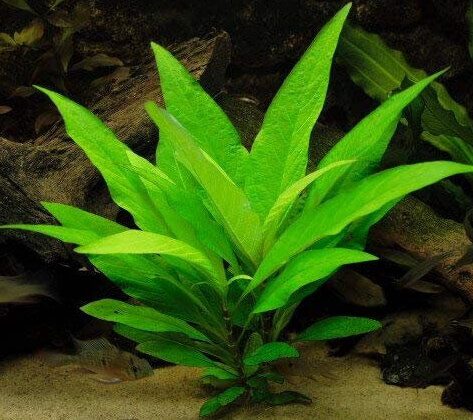
- Tetras
- Rasboras
- Livebearers
These species are known for their calm demeanour and are less likely to uproot or nibble on the plant.
Fish Species To Avoid
Avoiding aggressive or herbivorous fish species that may harm or destroy Hygrophila stricta is essential. These fish can either damage the plant by uprooting it or nibbling on its leaves. It is recommended to avoid the following fish species:
- Cichlids
- Herbivorous catfish (certain species)
By selecting compatible tank mates and avoiding aggressive or herbivorous fish species, you can ensure a thriving and visually appealing aquarium for your Hygrophila stricta.
Feeding (Fertilization)
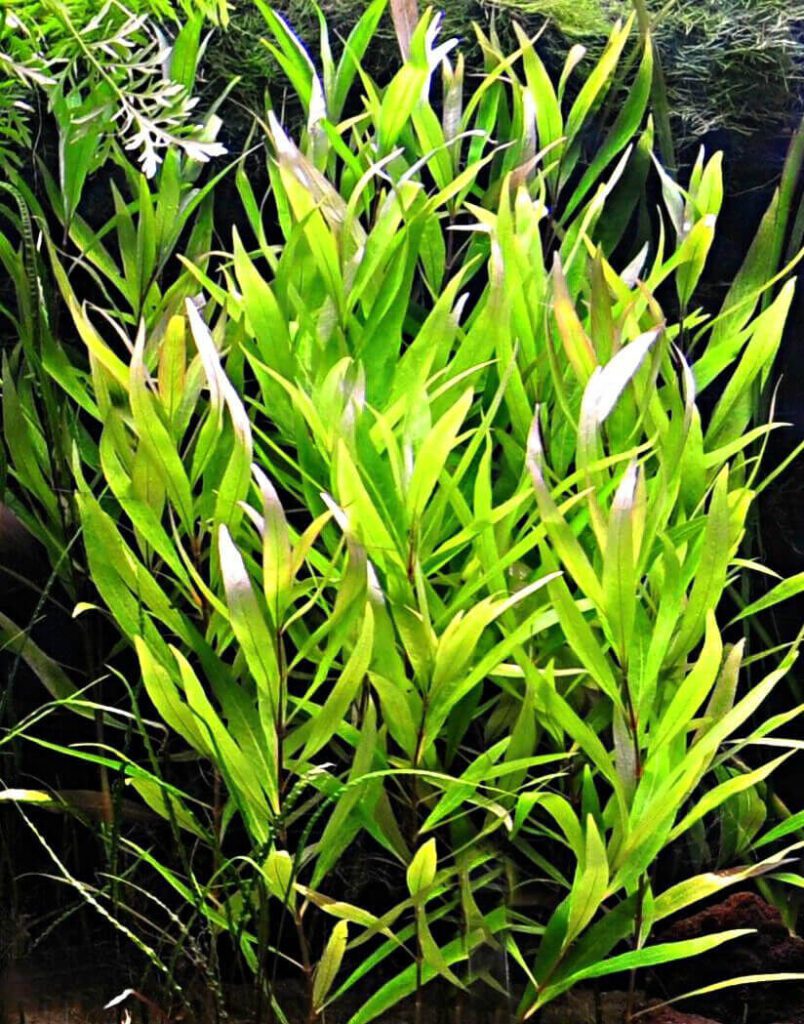
Hygrophila stricta, like other aquatic plants, derives nutrients from the water column. However, additional fertilization can significantly enhance its growth and overall health. Using liquid or substrate fertilizers formulated explicitly for aquatic plants can provide the essential nutrients that Hygrophila stricta needs to thrive.
When it comes to fertilization, the dosage and frequency will depend on the specific product used and the needs of your aquarium. It’s important to carefully read and follow the manufacturer’s instructions to ensure proper feeding and fertilization practices.
The right amount of fertilizers can help promote healthy growth, vibrant colouration, and robust development in your Hygrophila stricta plants.
CO2 Injection
CO2 injection can significantly benefit the growth and overall health of Hygrophila stricta. Supplementing with carbon dioxide enhances photosynthesis, promoting vibrant growth and colouration in the plant. Aquarists can choose from different types of CO2 injection methods, depending on their specific needs and budget.
Types of CO2 Injection
1. Pressurized CO2 Systems: These systems involve a canister of pressurized CO2 gas, which is then released into the aquarium water through a diffuser or atomizer. Pressurized CO2 systems offer precise control over CO2 levels and are suitable for larger aquarium setups. They can be more costly initially but provide consistent and reliable CO2 supplementation.
2. DIY Yeast CO2 Setups: This method involves creating a homemade CO2 system using water, sugar, and yeast. The yeast ferments the sugar, producing CO2 as a byproduct. The CO2 is then delivered to the aquarium through a diffuser or airstone. DIY yeast CO2 setups are more affordable but require regular maintenance to replace the yeast mixture. They are suitable for smaller aquariums.
3. Liquid Carbon Supplements: Liquid carbon supplements contain chemical compounds such as glutaraldehyde or formaldehyde that provide a plant carbon source. These supplements can be directly added to the aquarium water and do not require additional equipment. Liquid carbon supplements are an alternative option for aquarists who prefer not to use pressurized CO2 or DIY setups. However, they may not be as effective as other methods for promoting plant growth.
Overall, the choice of CO2 injection method depends on individual preferences, budget, and the aquarium’s specific needs. It is essential to monitor CO2 levels and adjust accordingly to avoid potential imbalances that may harm the fish or other aquarium inhabitants. Consulting with experienced aquarists or professionals can provide guidance and support in selecting and implementing the most suitable CO2 injection method for Hygrophila stricta.
Care
Specific care considerations should be taken into account to ensure the optimal growth and health of Hygrophila stricta. It is crucial to provide a suitable planted tank environment with appropriate parameters such as temperature, pH, and hardness. This plant thrives in water temperatures between 22-25°C and a pH range of 6.2-7.5. Filtration should be efficient to maintain water quality and prevent the accumulation of waste and debris. Moderate water flow is recommended to ensure adequate distribution of nutrients and CO2.
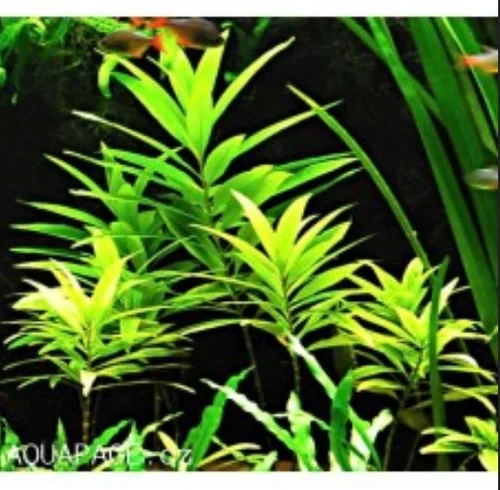
| Planted Tank Parameters | Water Quality | Filtration | Flow |
|---|---|---|---|
| Water temperature: 22-25°C pH range: 6.2-7.5 Suitable hardness levels | Good water quality is crucial for the health of Hygrophila stricta. Regular testing of ammonia, nitrite, and nitrate levels is recommended to ensure a stable environment. | Efficient filtration is necessary to remove waste and debris from the water. A canister filter or a combination of mechanical and biological filtration can help maintain optimal water conditions. | Moderate water flow is ideal for Hygrophila stricta. It helps distribute nutrients and CO2 throughout the tank, promoting healthy growth and preventing stagnant areas. |
Aquarium Maintenance
Regular aquarium maintenance is crucial for the health and longevity of Hygrophila stricta. By conducting routine maintenance tasks, you can ensure that your aquarium provides a stable and suitable environment for the plant to thrive.
Testing Water Conditions
Testing the water conditions in your aquarium is integral to maintaining a healthy environment for Hygrophila stricta. It is recommended to regularly test parameters such as pH, ammonia, nitrite, and nitrate levels. These tests will help you monitor the water quality and make any necessary adjustments to ensure optimal plant growth conditions. By closely monitoring the water parameters, you can address any issues promptly and prevent potential problems.
How To Set Up Your Aquarium Tank
Proper aquarium setup plays a critical role in the initial growth and establishment of Hygrophila stricta. Consider substrate choice, lighting, and CO2 injection when setting up your aquarium tank.
The substrate you choose should suit aquatic plants and provide a nutrient-rich environment. A nutrient-rich substrate will help support the growth of Hygrophila stricta and provide essential nutrients to the roots.
Lighting is another crucial factor to consider. Hygrophila stricta requires moderate to high lighting for optimal growth and colouration. Ensure your aquarium lighting system provides sufficient light intensity and spectrum to meet the plant’s needs.
CO2 injection can also benefit the growth and overall health of Hygrophila stricta. Carbon dioxide supplementation enhances photosynthesis and promotes vibrant growth. There are various methods of CO2 injection, including pressurized CO2 systems, DIY yeast CO2 setups, and liquid carbon supplements. Choose a CO2 injection method that suits your needs and budget.
By properly setting up your aquarium tank, you can create an ideal environment for Hygrophila stricta to thrive.
Propagation Methods
Propagation is an essential aspect of aquarium plant care, allowing you to expand your Hygrophila stricta population and enhance the overall aesthetics of your tank.
The most common propagation method for Hygrophila stricta is taking cuttings. To propagate this plant, carefully trim a healthy stem with a pair of scissors or pruning shears, including several leaf nodes. Then, replant the cuttings in the aquarium substrate, ensuring they are securely rooted.
It is important to remember that Hygrophila stricta is a fast-growing plant, so it is beneficial to regularly trim and replant cuttings to prevent overcrowding and ensure optimal growth conditions.
By utilizing propagation methods, you can maintain a healthy and vibrant population of Hygrophila stricta in your aquarium.
Below is a visually engaging table summarizing the key elements of aquarium maintenance for Hygrophila stricta:
| Task | Description |
|---|---|
| Test Water Conditions | Regularly test and monitor pH, ammonia, nitrite, and nitrate levels to maintain a stable and suitable environment for the plant. |
| Set Up the Aquarium Tank | Select appropriate substrate, ensure proper lighting, and consider CO2 injection to create an optimal environment for Hygrophila stricta. |
| Propagation | Take cuttings and replant them in the substrate to expand and maintain a healthy population of Hygrophila stricta. |
Regular maintenance and attention to these key aspects will contribute to the overall health and success of your Hygrophila stricta aquarium.
Health And Disease
Monitoring the health of Hygrophila stricta is essential in maintaining a thriving aquarium. It is important to be aware of the signs of good and poor health to ensure timely intervention and appropriate care.
Signs Of Good Health
Healthy Hygrophila stricta exhibits specific characteristics that indicate its well-being. Vibrant colouration, such as rich greens and reds, signifies optimal health. New growth suggests that the plant is actively growing and flourishing. Additionally, strong root development is essential for anchoring the plant and ensuring efficient nutrient uptake from the substrate.
Signs Of Poor Health
Recognizing signs of poor health in Hygrophila stricta is crucial to prevent further deterioration. Yellowing or browning leaves often indicate nutrient deficiencies or other underlying issues. Stunted growth and weakened stems may suggest inadequate light or nutrient availability. It is crucial to address these symptoms promptly to prevent further decline.
Common Health Issues And Treatment
Hygrophila stricta can experience various health issues hindering its growth and overall well-being. Nutrient deficiencies like iron or potassium can lead to poor plant health. Algae overgrowth can also be a common issue, resulting from imbalanced nutrient levels or excessive light exposure. Fungal or bacterial infections can occur, causing rotting or decaying of the plant. Proper diagnosis of the specific issue is crucial. Treatment may involve targeted nutrient supplementation, lighting or CO2 level adjustment, and appropriate treatments to combat infections.
Plant Pests
Like any other aquarium plant, Hygrophila stricta is vulnerable to plant pests that can negatively impact its health. Common plant pests that can affect this plant include snails and aphids. These pests can devour the leaves, leading to damage and reduced growth. Implementing effective pest management techniques to control and prevent infestations is essential. Regularly inspecting the plant and taking appropriate action, such as manual removal or safe pest control methods, can help protect the plant’s health.
Summary
Hygrophila stricta is a versatile and visually striking freshwater aquarium plant. With proper care and maintenance, it can thrive in various tank environments and provide aesthetic appeal to the aquascape.
To ensure the optimal growth of Hygrophila stricta, it is crucial to provide appropriate lighting, fertilization, and CO2 supplementation. Moderate to high lighting will enhance the vibrant colouration of the plant, while liquid or substrate fertilizers can provide essential nutrients. CO2 injection, whether through pressurized systems or DIY setups, will promote healthy growth and photosynthesis.
When selecting tank mates for Hygrophila stricta, it is crucial to choose peaceful species that will not damage or uproot the plant. Avoiding herbivorous fish, such as cichlids and certain catfish species, will help preserve the plant’s integrity. Monitoring water conditions, including pH, temperature, and filtration efficiency, is necessary to create a suitable plant growth environment. Promptly addressing any health issues, such as nutrient deficiencies or common pests, will contribute to the long-term success of Hygrophila stricta in the aquarium.
Hygrophila stricta is a visually appealing aquarium plant that can thrive with the proper care. Adequate lighting, fertilization, and CO2 supplementation are key factors in promoting its growth and vibrant colouration. Choosing compatible tank mates and promptly addressing health issues will contribute to the plant’s longevity. By providing the optimal environment, aquarists can enjoy the beauty and versatility of Hygrophila stricta in their aquariums.
FAQ
What are the care requirements for Hygrophila stricta?
Hygrophila stricta is a relatively easy plant to care for. It prefers moderate lighting and can tolerate a wide range of water conditions. It benefits from regular fertilization and the addition of CO2. Proper maintenance, including testing water conditions and addressing any health issues promptly, is crucial for its health and longevity.
Where is Hygrophila stricta native to?
Hygrophila stricta is native to Southeast Asia and can be found in countries such as Thailand, Malaysia, and Indonesia.
What are the morphological characteristics of Hygrophila stricta?
Hygrophila stricta has elongated leaves that can range in color from light green to reddish, depending on the lighting conditions. It has a distinct red stem that adds visual interest to the aquarium. The leaves are relatively soft compared to other Hygrophila species.
Where should I place Hygrophila stricta in my aquarium?
Hygrophila stricta is typically placed in the background or midground of an aquarium. It can be planted individually or in groups to create a lush and vibrant display.
What are good tank mates for Hygrophila stricta?
Good tank mates for Hygrophila stricta include peaceful community fish such as tetras, rasboras, and livebearers. Avoid aggressive or herbivorous fish species that may damage or uproot the plant, such as cichlids and certain species of herbivorous catfish.
How should I feed and fertilize Hygrophila stricta?
Hygrophila stricta can derive nutrients from the water column, but additional fertilization can help promote healthy growth. Liquid or substrate fertilizers specifically formulated for aquatic plants can be used. The dosage and frequency of fertilization will depend on the specific product and the needs of the aquarium.
What types of CO2 injection methods can I use for Hygrophila stricta?
There are various methods of CO2 injection, including pressurized CO2 systems, DIY yeast CO2 setups, and liquid carbon supplements. The choice of CO2 injection method will depend on the specific needs and budget of the aquarist.
What are the care considerations for Hygrophila stricta?
Care considerations for Hygrophila stricta include providing suitable tank parameters such as temperature, pH, and hardness. Filtration should be efficient to maintain water quality, and moderate water flow is recommended. Regular aquarium maintenance, testing water conditions, and addressing any health issues promptly are important for its health and longevity.
How do I maintain my aquarium with Hygrophila stricta?
Regular aquarium maintenance is crucial for the health and longevity of Hygrophila stricta. Testing water conditions, including pH, ammonia, nitrite, and nitrate levels, is essential. Proper aquarium setup, including substrate choice, lighting, and CO2 injection, is important for initial growth. Propagation methods for this plant include taking cuttings and replanting them in the substrate.
What are the signs of good health and poor health in Hygrophila stricta?
Signs of good health in Hygrophila stricta include vibrant coloration, new growth, and strong root development. Signs of poor health may include yellowing or browning leaves, stunted growth, and weak stems. Common health issues that can affect it include nutrient deficiencies, algae overgrowth, and fungal or bacterial infections.
How can I prevent plant pests in my aquarium with Hygrophila stricta?
Plant pests such as snails or aphids can pose a threat to Hygrophila stricta. They should be managed accordingly using appropriate treatments or preventative measures.
What are the key points to remember for Hygrophila stricta care?
Key points to remember for Hygrophila stricta care include providing appropriate lighting, fertilization, and CO2 supplementation. Choose compatible tank mates and avoid aggressive or herbivorous fish species. Regular monitoring of water conditions and addressing any health issues promptly are important for its long-term success.

